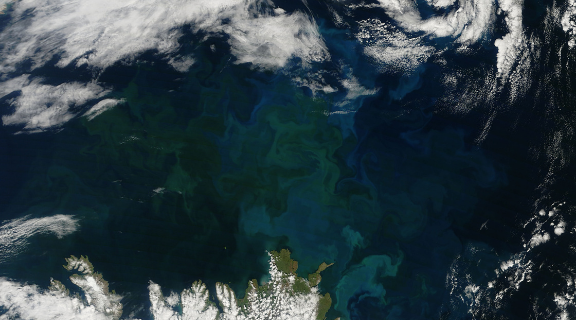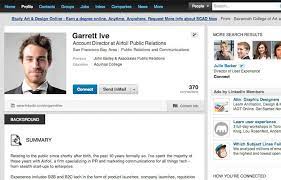Successful universities the world over are deeply connected with the social, economic and political environment in which they serve. However, universities should also operate independently as they are not factories or political tools, and they do not need charismatic leaders the way armies and churches might.
Universities are collectives, and open, critical discourse based on democratic principles is essential for their success. As part of their time-honoured compact with society, universities should not blandly surrender to outside pressures, but actively and critically engage with them.
Social and political context
There are an increasing number of national imperatives that universities need to consider in deciding how to position themselves. For instance, since the dawn of South Africa’s democracy, there has been a push to broaden access to higher education in order to accommodate more students with different prior experiences, different goals and ambitions, and different levels of preparedness. Importantly, transformation of our universities has included calls to diversify the professoriate and to change the culture of universities.
The weak South African economy suggests that the country’s universities should prepare their students more directly for the job market. There are cries for a stronger focus on practical skills development, almost akin to vocational training. There is an expectation that academics and researchers should make more direct contributions to marketable innovations, and be more inventive with developing practical applications and solutions to everyday problems.
Funding agencies call for research programmes with more direct relevance to South Africa. There are, thus, enormous pressures for curriculum reform, and invariably arguments for decolonisation, with all its political ramifications.
Coupled to the above, a burgeoning agenda for African development is being set by the African Union’s Agenda 2063, and looking further afield, the global socio-economic and political environment for change is being defined fairly comprehensively by the United Nations’ Sustainable Development Goals. These are further considerations that universities are being asked to take on board to frame their research and teaching programmes if they are going to be relevant in the future.
Politicisation of research
The challenges for science in the 21st century do not end there. A real problem today is that truth is increasingly being undervalued, and scientific research is becoming politicised, for example, in the context of climate change. This is a scourge that is spreading world-wide.
The efforts required to advance knowledge for societal benefit are not always understood and appreciated by society, including by decision-makers. The need for an independent, critical academy is not always appreciated and, on the contrary, is often seen to be a threat by many autocratic regimes.
It is becoming difficult to discriminate between real and bogus information ‘out there’ because much of the information on the internet has not been sufficiently tested for veracity and truth. Lies can be propagated at a phenomenal rate. For universities, which should pride themselves on uncovering the truth, this is debilitating. In this environment, it is also becoming more difficult to counter plagiarism and protect intellectual property – matters that are of profound importance for our universities.
Most, but not all, citizens of the world have free and easy access to information, which begs the question: “Are our universities becoming less relevant?” They will be if educational and research systems are not adjusted. We certainly need more discussion on how universities should change, and this will remain a hotly contested area in planning for the future of universities for many years to come.
Global challenges
There is a growing number of substantive challenges in academia. Across a majority of disciplines, we are moving into the era of extremely large data sets, calling for smarter and more secure means of storing and transporting data, as well as accessing and mining data intelligently for research and decision-making.
This means that an increasing number of researchers across many different disciplines, including the humanities and social sciences, need to become more computationally competent. In addition, these researchers need to be preparing to work in larger, multidisciplinary teams to resolve quantitative problems more effectively. While this need is set to grow, this transition is arguably not happening fast enough.
The world-wide science system has become enormous, and it is proving to be extremely difficult to keep up with research outputs in one’s own narrow research area of interest, let alone more broadly. The flood of information is overwhelming and we need smarter ways to keep up, or else we run the risk of duplicating efforts and falling behind.
On the topic of peer-reviewed publications, it has finally dawned on academics and universities that they should not be paying exorbitant costs to access publicly-funded research and in so doing enrich large corporations. The entire world of publications in this age of the internet is in a process of radical change. Academics need to seriously contemplate the pros and cons of open access, and actively participate in the global discussions currently taking place, for example, around the proposed European Plan S.
Developing science responsibly
There are enormous disparities in science around the world, which demand that we think more deeply about how we develop science more extensively on a global scale for the good of all of humanity.
The big science questions need big – meaning expensive – research infrastructures. This calls for large, multidisciplinary teams and multinational collaborations. We must ask how we can participate more effectively, especially from the southern tip of Africa. The rest of Africa is falling behind because there has been relatively little commitment from many African countries to invest in scientific research infrastructure and in people development. This will continue to hold Africa back.
South Africa is globally connected though the internet, which means that the country is also susceptible to international terror through breaches in cybersecurity. The ways in which some international agencies and governments are protecting themselves against cyber-attacks are top secret for obvious reasons, which means that many countries in the developing world are left in the dark and will need to figure out their own solutions. African countries and their universities need to invest in their own programmes to interrogate cybersecurity for their own well-being and national security.
Open-ended, unfettered science in its purest form has, over the centuries, been pursued in the interests of understanding nature in a fundamental way, and long may that continue. Scientific ideas and discoveries have often been very successfully exploited for commercial gain and societal improvements, and much of the science system today the world over is designed to push scientists in the direction of more relevance. The applications of science coupled with critical thought have been essential in solving many problems facing society.
Usually, that impact has been positive, but not always. There has been collateral damage and unintended consequences along the way; for example, plastics in our oceans, and other harmful environmental effects. The military has been a strong supporter of science in many countries, including during apartheid South Africa. Science has been driven in particular ways to gain superior might. Many authoritarian states, such as North Korea, have invested significantly in a very narrow set of scientific endeavours and technologies with a singular purpose in mind.
Through the millennia, there has always been the potential for scientific outputs to be misused, from the time the simple domestic knife was invented. Science in the wrong hands can be catastrophic – and a climate for the misuse of science is growing.
Limited global resources
Some of the more difficult questions that academics need to think about relate to the consequences of the rapidly increasing global population and the stress this places on our resources and environment. This is already resulting in a power struggle for limited resources. The future of the human race depends on scientists finding more intelligent answers to difficult questions, and here researchers have a central role to play.
With the rapidly increasing world population one can conclude that, purely from a statistical viewpoint, each life is becoming less significant. It should boggle the mind, then, to think about what this could imply in terms of the potential for increased unethical behaviour towards our fellow human beings, for example, in terms of mass exterminations, human experimentation and cruelty.
We should think deeply about this and how academics can try to counter these tendencies in their work – by identifying the problem early on, and proposing solutions before the problem gets beyond our control.
History will show that so much has been accomplished by so few with so little over the past 100 years. This period has been unprecedented in the history of the human race. It is difficult to believe that the electron was discovered just over 100 years ago, and through science and the applications of science, technology, industrialisation and commercialisation, and sheer ingenuity, humans have been able to harness the fullest potential of the electron to fundamentally change the way in which we live our lives, not only in a technical sense, but also in a social sense. This tiny particle has come to define our age, namely the electronic age.
This stunning growth over a short period does raise unrealistic expectations that new scientific ideas and technologies needed to solve challenges in the 21st century will emerge just as easily, just as rapidly and just as cheaply, with the snap of a finger, so to speak.
But that is not correct.
Support for science
Our universities are working under extremely tight fiscal constraints. Academics are being asked to do much more with much less at a time when our universities are under enormous pressures to be ‘world class’. Science needs much more support for the public good.
In striving to be nationally responsive and world class, South African science must be connected with the global environment that frames science. We should be consolidating and setting the foundations to be world class. We need to be excellent in all aspects of the academic enterprise including our management, operations, teaching and learning, research and external engagements.
Universities in South Africa have been in a state of stress for a while, and one wonders whether an era of stability is possible in which to focus on core functions.
A successful and prosperous South Africa depends on a modern, scientifically literate and technically competent workforce, and here, universities have a central role to play. They are a precious resource.
Stakeholders need to engage more intelligently and constructively with each other within and without the university, or the idea of the university will be under threat. We are but temporary custodians of the institutions we inherit. The hope and expectation are that we will build on the foundations that have been laid by others over the years, and to leave it in a better state than we found it.












.png)












